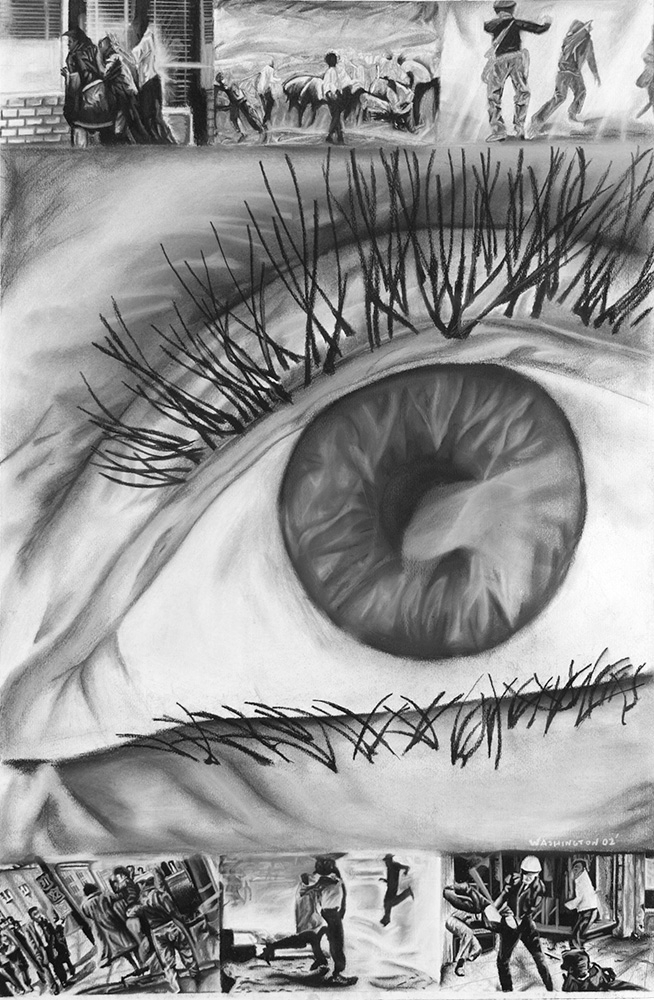Paradox

Nonviolence and peaceful protest were important precepts of the Civil Rights Movement and a major reason for its success. The nonviolent tactics of protestors accentuated the ugliness and cruelty of violent responses by policemen, sheriffs, vigilante groups, and other defenders of the status quo. Blacks and white sympathizers of the civil rights cause were the regular targets of beatings, vandalism, death threats and discrimination. As the media and news outlets increasingly publicized this domestic terrorism to the American people, the Civil Rights Movement gained support and political traction.
In “Paradox”, Washington uses the juxtaposition of several key images to illustrate the inherent contradiction of the violent reaction to non-violent protest perpetuated by police during the Civil Rights Movement. Southern police – who were supposed to “protect and serve” – turned their billy clubs, police dogs, and water hoses on law-abiding citizens exercising their constitutional right to peaceful protest. At both the bottom and top of the artwork, Washington juxtaposes images of police brutality and peaceful demonstrations. In the center of the image, a large eye observes the myriad atrocities. Collectively, the combination of images conveys to the viewer the difficult and frequently dangerous experience of the civil rights protestor during this epoch.